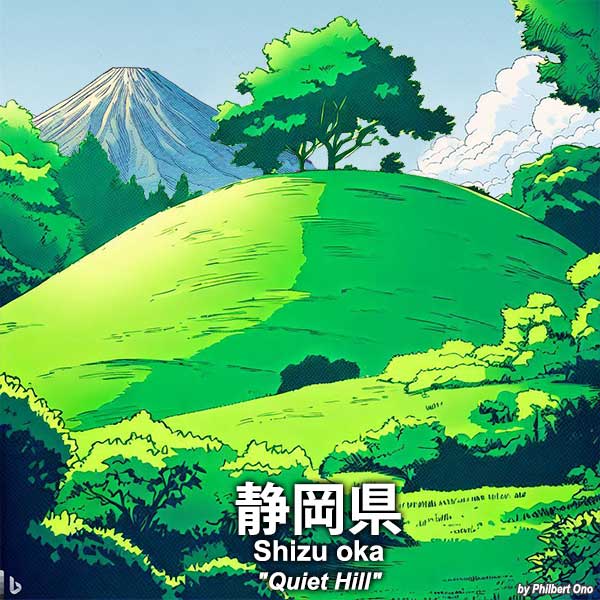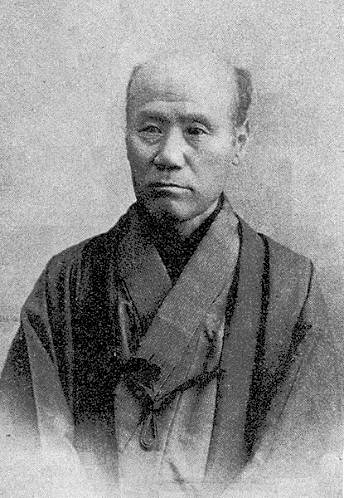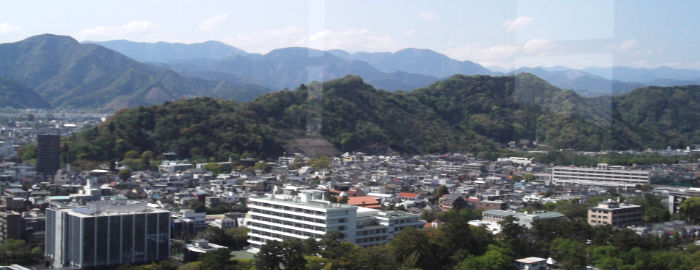SHIZUOKA – Quiet Hill 静岡県

During the samurai era, present-day Shizuoka had a major city and samurai domain named Fuchu (府中). However, the new Meiji government didn’t like the name “Fuchu” since it symbolized the samurai government and sounded like fuchu (不忠) meaning “disloyal.” So the domain (city) name was changed to “Shizuoka” in July 1869.
As a place name or administrative division, “fu” (府) historically indicated the highest ranked or central locality. Today, only Kyoto and Osaka prefectures retain the fu designation although legally, they are the same as other prefectures. Tokyo also used to be Tokyo-fu until it become Tokyo-to (東京都).
Shizuoka was originally named after a low mountain named Shizuhata-yama (賤機山) near Sunpu Castle in central Shizuoka city. The proposed prefectural name was “Shizugaoka” (賤ヶ丘) meaning “Low Hill.”
However, since the kanji character for “Shizu” (賤) could also mean “greedy, shabby, vulgar, or despise,” it was replaced with 静 meaning “quiet.”
The name was also shortened to “Shizuoka.” These name changes were proposed by local Shizuoka scholar and poet Mukoyama Koson (1826–1897 向山黄村). He thought “Shizuoka” was easier to pronounce with fewer syllables and had a better meaning as well.
It literally means “Quiet Hill,” but there is no such hill named “Shizuoka.” It’s only a place name.


Old province names: Suruga-no-Kuni, Izu-no-Kuni, Totomi-no-Kuni (駿河国+伊豆国+遠江国)
*The AI-generated image is for illustrative purposes only and may not accurately depict any particular place in the prefecture.
Origin of other prefectural names (etymologies)
Overview | Aichi | Akita | Aomori | Chiba | Ehime | Fukui | Fukuoka | Fukushima | Gifu | Gunma | Hiroshima | Hokkaido | Hyogo | Ibaraki | Ishikawa | Iwate | Kagawa | Kagoshima | Kanagawa | Kochi | Kumamoto | Kyoto | Mie | Miyagi | Miyazaki | Nagano | Nagasaki | Nara | Niigata | Oita | Okayama | Okinawa | Osaka | Saga | Saitama | Shiga | Shimane | Shizuoka | Tochigi | Tokushima | Tokyo | Tottori | Toyama | Wakayama | Yamagata | Yamaguchi | Yamanashi